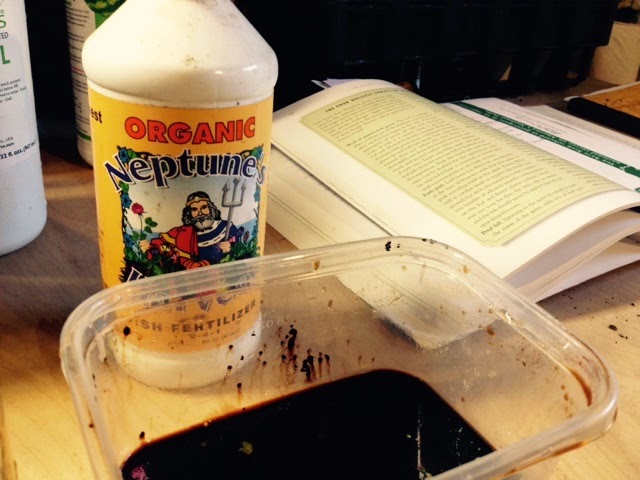 |
| apples in hedgerow |
- Apples (early blooming): Yellow Transparent, Whitney Crab, Zestar!
- Apples (mid blooming): Liberty, St Edmund's Pippin
- Apples (late blooming): Arkansas Black, Winesap, Stayman Winesap, Virginia Beauty, York, Red Royal Limbertwig
- Hazelnuts (unknown varieties)
- Aronia
- Nanking Cherries
- Fig (Celeste)
- Raspberries
Between and underneath these trees and shrubs I have kitchen herbs (closest to the house), strawberries, comfrey, and flowers, and covering it all is a deep mulching of woodchips. This mixed planting has some permaculture ideas going on including the idea of underplanting shrubby things and trees with lower growing things and tap-rooted things that won't compete too much with the shallow tree roots. In my notorious style, it is all a little haphazard....it was not planned and drawn out perfectly on graph paper first.
The apples came from a fantastic nursery called Urban Homestead in Virginia. The number of antique apples this small family business propagates is staggering, and their customer service is simply excellent. These trees are EMLA111 rootstock, a large semi-dwarf rootstock that will take some serious pruning to keep small. This rootstock has disease resistance, does well on heavy soils, and is good at anchoring. Since we have lots of wild apple trees in the area that may host diseases, heavy soil, and a site that gets some wind, I thought this rootstock seemed like a good choice.
These trees will want to grow 25' and I'd like to keep them to under 12'. The type of intensive growing I'm talking about is Backyard Orchard Culture, as discussed on this page by Dave Wilson nursery growers. Another blog I like, The Walden Effect, has tried out a version of this type of growing and is having success with it. I see it as a chance to experiment. Thinking about the longterm, if we ever leave this garden and the next owner doesn't want to prune so intensively, I could see taking out every other tree and letting the remaining trees grow larger.
I love the idea of widely spaced, full grown trees in a proper orchard, but on our site, I'd like these trees to be part of the hedgerow. A dwarfing rootstock seems a more obvious choice for keeping small, but dwarf trees need stakes, and Dave Wilson Nursery actually advocates the use of EMLA111. As a novice fruit tree grower, I can't help thinking there must be consequences to keeping a tree from growing as large as it is trying to grow. We shall see.




























